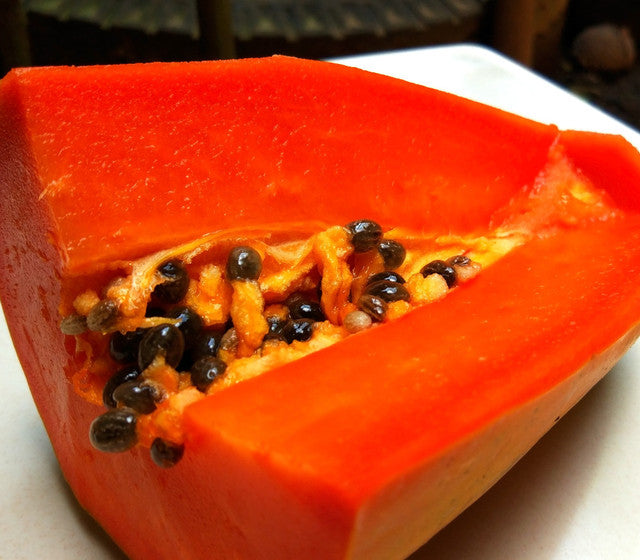
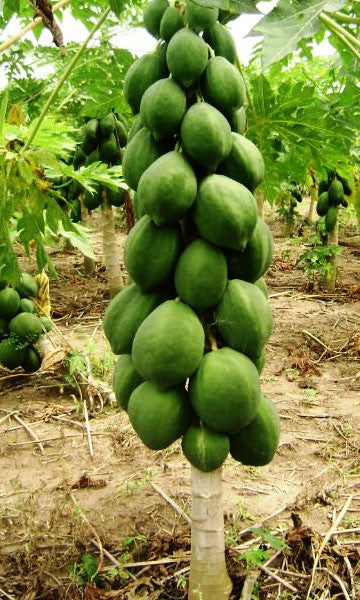
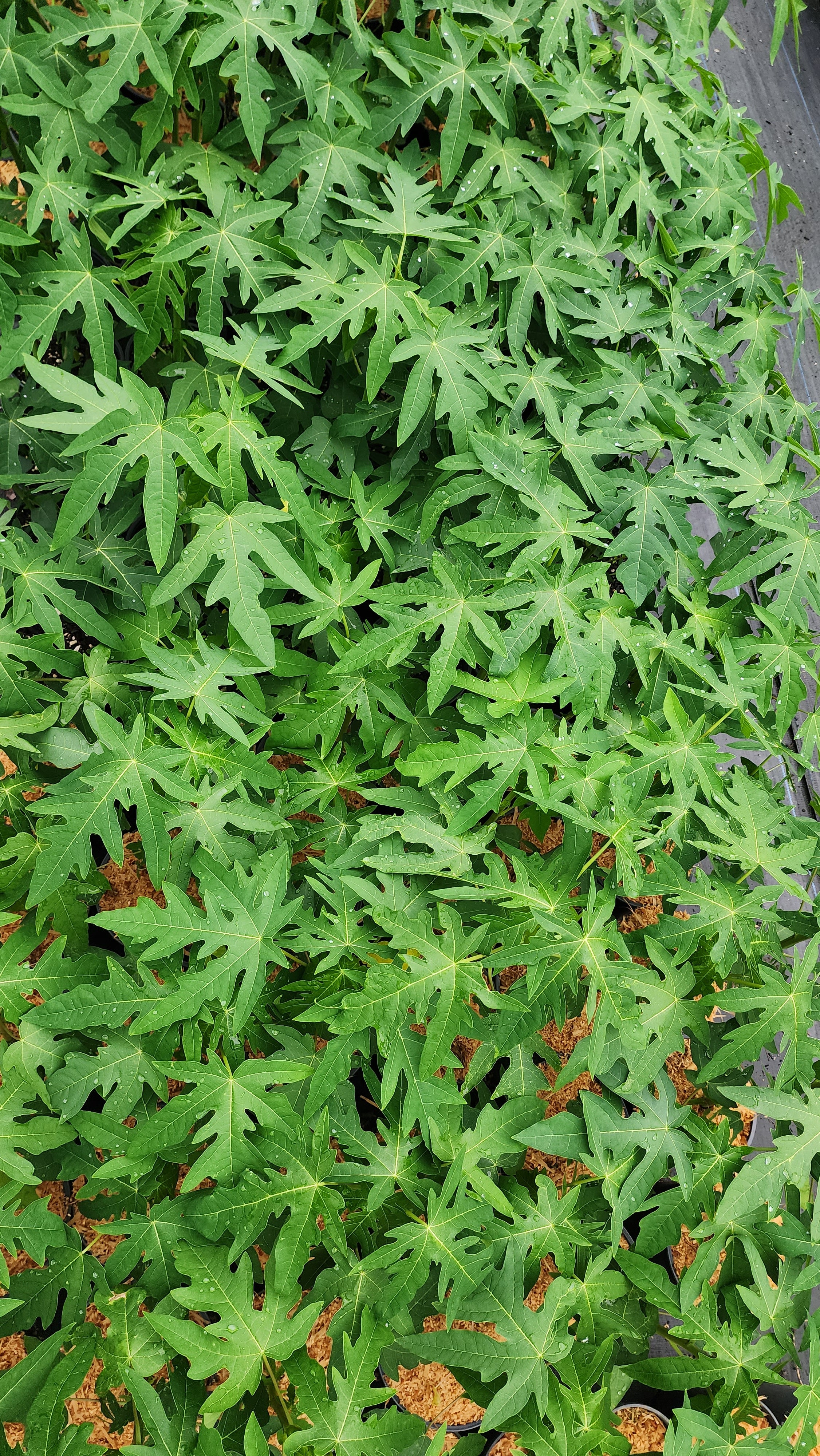

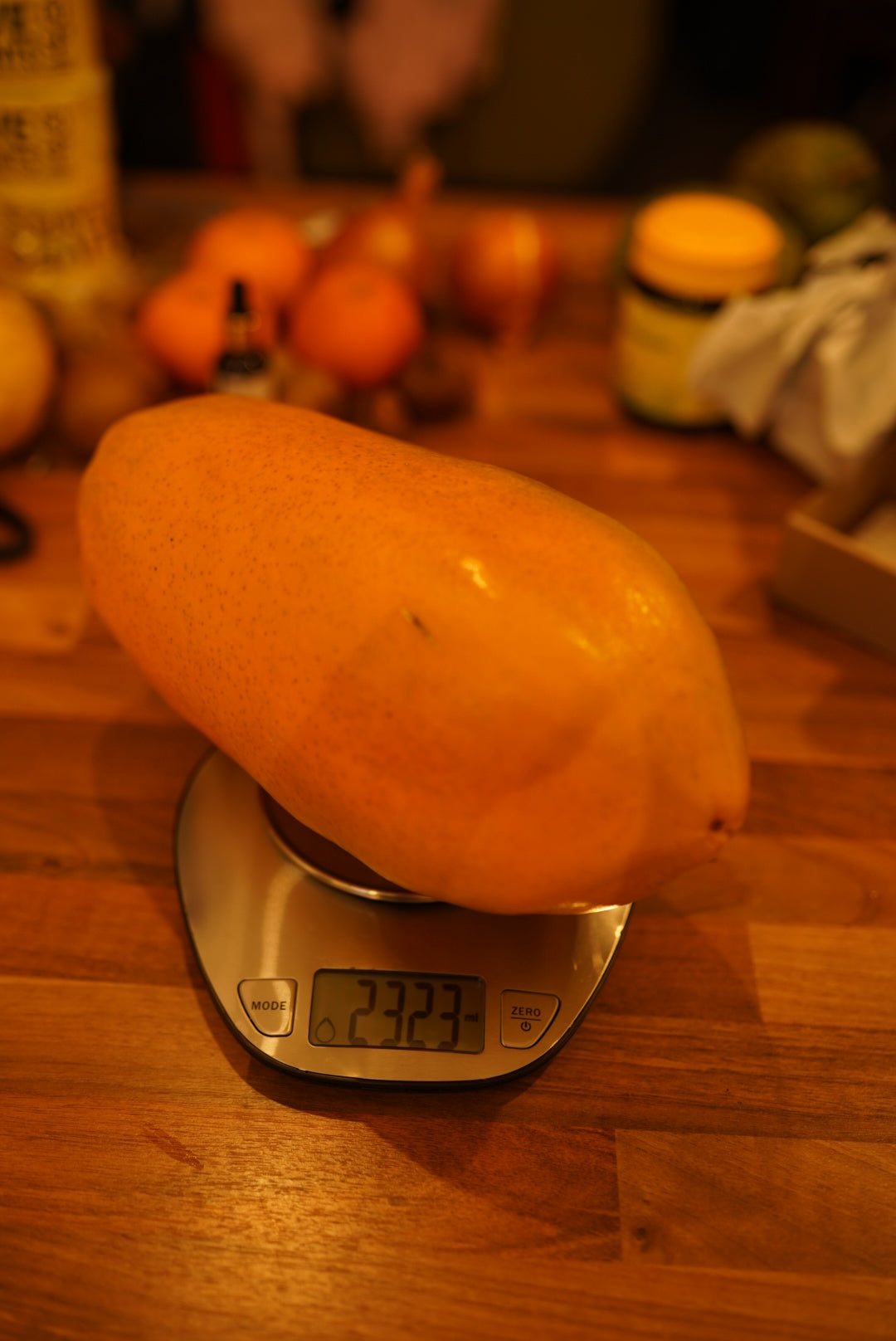
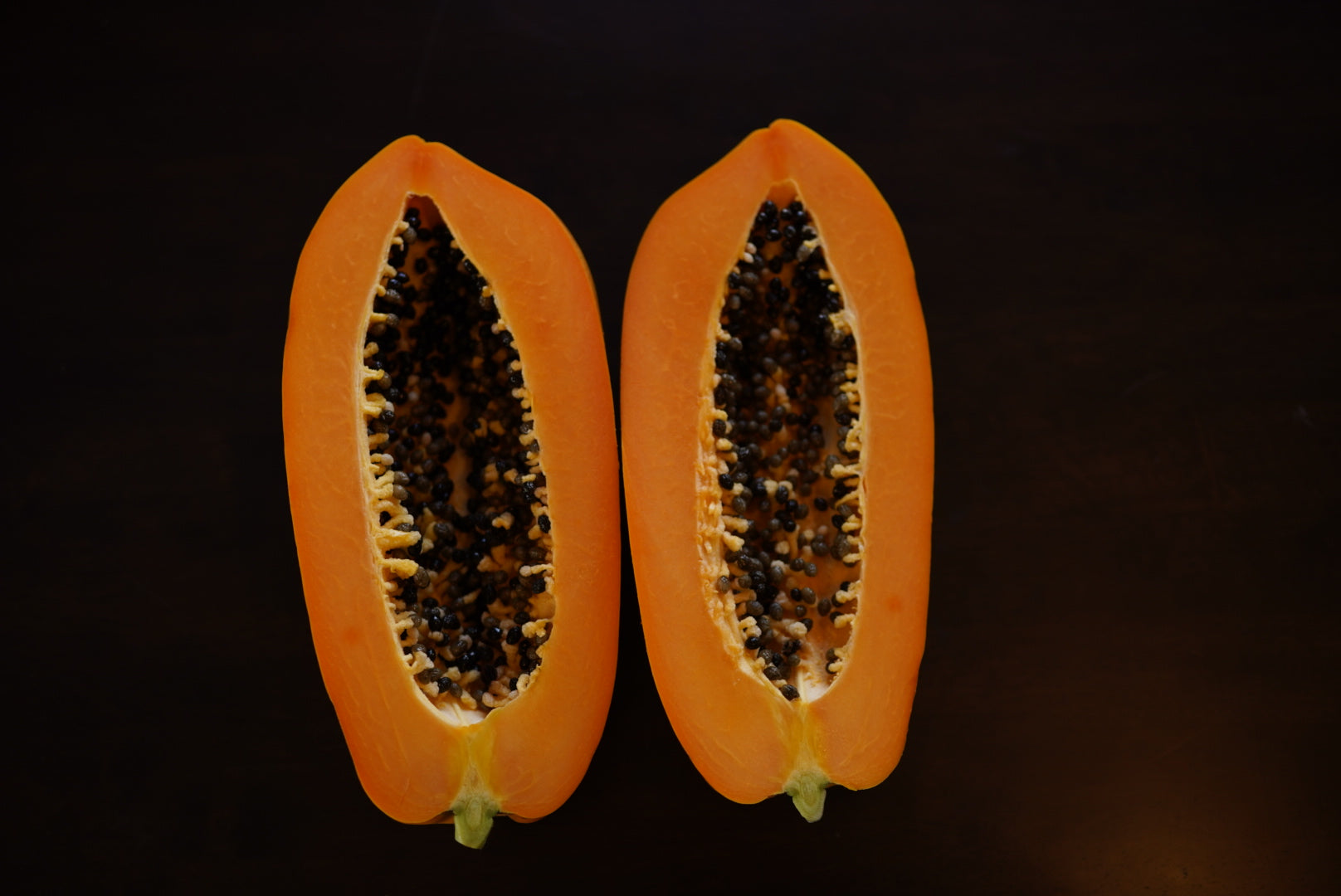
Papaya Care Tips
Location: Papayas like to be warm with both sunshine and reflected heat, so the hottest place against the house where nothing else seems happy is an ideal location. They also like to be as free from wind as possible, although this is not as critical as their need for sun. Papayas can be grown successfully in shade, but the fruit is rarely sweet. They are best planted in mounds or against the foundation of a building where water can be controlled.
Soils: Papayas need a light, well-drained soil. They are easily killed by excess moisture. The soil needs to be moist in hot weather and dry in cold weather. In addition to good drainage, plastic coverings to prevent over-wetting in winter may also be worthwhile. Papayas do not tolerate salty water or soil.
Irrigation: Watering is the most critical aspect in raising papayas. They should be kept on the dry side to avoid root rot, but also need enough water to support their large leaves. In winter the plant prefers to remain as dry as possible. A plant that has been injured by frost is particularly susceptible to root rot.
Fertilization: The fast-growing papaya requires regular applications of nitrogen fertilizers but the exact rates have not been established. Feed monthly and adjust according to the plant's response. They can take fairly hot organic fertilizing such as chicken manure if used with deep irrigation after warm weather has started. Phosphorus deficiency causes dark green foliage with a reddish-purple discoloration of leaf veins and stalks.
Pruning: Papayas do not need to be pruned, but some growers pinch the seedlings or cut back established plants to encourage multiple trunks.
Frost Protection: Papayas need warmth and a frost-free environment, but can often withstand light freezes with some kind of overhead protection. This can be provided by building a frame around the plants and covering it with bedding, plastic sheeting, etc. when frost threatens. Electric light bulbs can also be used for added warmth. Potted specimens can be moved to a frost-secure area. Prolonged cold, even if it does not freeze, may adversely affect the plants and the fruit.












